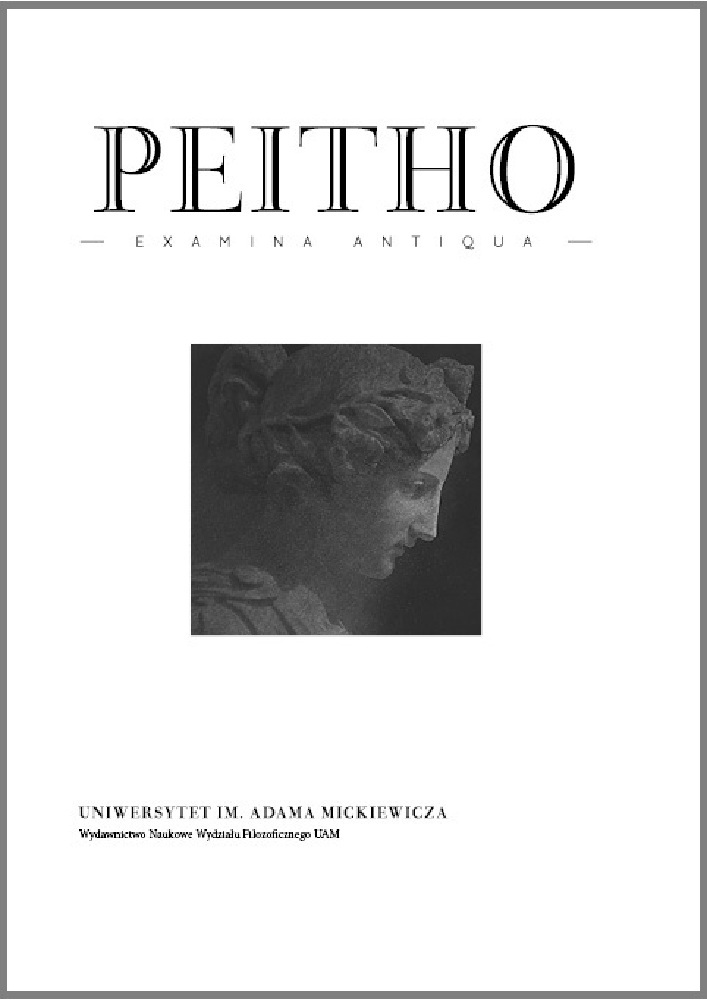Parmenide e l’Uovo argenteo degli Orfici in Simplicio, Damascio e Proclo
Parmenides and the Silver Egg of the Orphics in Simplicius, Damascius and Proclus
Author(s): IVAN ADRIANO LICCIARDISubject(s): Ancient World, Ancient Philosphy
Published by: Uniwersytet Adama Mickiewicza
Keywords: Egg; Orphism; Parmenides; Proclus; Damascius; Simplicius;
Summary/Abstract: When commenting on Aristotle Ph. 1.3, 187a1, Simplicius in Ph. 1.3, 146, 29–147,2 establishes an equivalence between the shining «silver egg» (ὤεον ἀργύφεον) of Orpheus (fr. 70 Kern) and the Parmenidean being or, rather, one of the determinations with which Parmenides, in the section of his Poem devoted to the so-called Way of Truth, indi- cates the ἐόν, i.e., «resembling the mass of a well-rounded sphere» (εὐκύκλου σφαίρης ἐναλίγκιον ὄγκωι – DK 28 B 8.43). The equivalence established here is found in the great digression about Parmenides (in Ph. 142, 28–148, 24), where Simplicius puts forward an interpretation of Parmenides that identifies the Parmenidean being-one (τὸ ἓν ὄν) with the intelligible (τὸ νοητόν), which, in another passages of the same commentary, is also qualified with the metaphysical concept of “unified” (τὸ ἡνωμένον) that is taken from Damascius. The aim of the present paper is to trace back the Neo-Platonic assumptions of this identifica- tion. In particular, we will focus on Damascius Pr. 2.55.40, 14–19 and 3.123.160, 1–3 Westerink, since these passages contain insights intothe Orphic theology that is referred to as “usual”, “common” or “rhap- sodic”, as well as a contextual “translation” of various Orphic concepts (e.g. ὤεον ἀργύφεον) in terms of Neo-Platonic metaphysics. The metaphysical transposition of the mythical image of the silver egg goes back, however, to Proclus (in Ti. 1.428, 8–9), who assumes the identity between Plato’s being (“being in the primary sense”, τὸ πρώτως [...] ὄν) and the Orphic egg (ταὐτὸν τό τε Πλάτωνος ὂν καὶ τὸ Ὀρφικὸν ὠόν). One cannot, at the same time, exclude a priori the possibility that the Orphic motif of the silver egg circulated in the Magna Graecia of Parmenides already from at least the 6th century BC. It is possible, as Colli hypothesised, that already Ibycus (who certainly knew Orpheus, fr. 25 Page) betrays a certain knowledge of it in fr. 4.4–5 Page, where we find the expression ἐν ὠέωι ἀργυρέωι. This article demonstrates that Proclus and Damascius embedded the Orphic concept of ὤεον ἀργύφεον into their Neo-Platonic metaphysics by showing its potential for speculative order.
Journal: Peitho. Examina Antiqua
- Issue Year: 14/2023
- Issue No: 1
- Page Range: 99-124
- Page Count: 26
- Language: Italian

